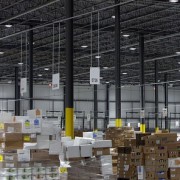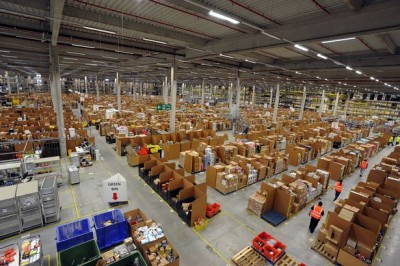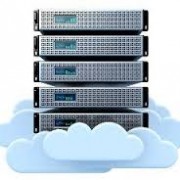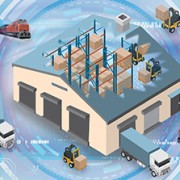“Trucking fleet owners, on their part, must expect to pay for the services of men who are worthy and are willing to promote the interests of their employers.”—“The Truck Driver Problem,” Traffic World magazine, Dec. 12, 1914.
There is nothing new about “the truck driver problem” over the past 100 years. Good, reliable drivers have always been in tight supply and coveted by the most progressive trucking companies. However, in today’s $35 billion less-than-truckload (LTL) sector, even a century’s worth of experience may not have sufficiently prepped the industry for the capacity crunch currently in the LTL market.
Drivers are as scarce as ever, regulations are tightening, equipment costs are rising by double-digit percentages, terminals are frightfully expensive to build or acquire, and shipper demands for faster, more trackable deliveries are only mounting as e-commerce and omni-channel fulfillment turn up the pressure on both retailers and manufacturers.
However, for carriers who are able to meet these challenges and stay viable, the rate forecast is certainly brighter than it has been the last five years. “To put it into weather terms, the forecast for LTLs is sunny today, tomorrow, the rest of this year, and into 2015 and 2016,” says Satish Jindel, principal of SJ Consulting, an analyst firm that closely analyzes trends and pricing in the LTL sector.
According to Jindel, LTL carriers are benefitting from strength in the U.S. industrial sector. Also, a capacity shortage in the truckload (TL) sector is causing a “trickle-down” effect of freight to the LTL sector. Such favorable market conditions are somewhat tempering LTL carriers’ bottom lines due to an unprecedented cost increase in labor, equipment, terminals, and replacement parts and tires, carriers say.
In fact, a recent study by the American Transportation Research Institute (ATRI), a unit of the American Trucking Associations, confirmed what nearly every shipper in the U.S. has discovered: trucking costs and rates per mile are rising with no end in sight.
In its most recent Analysis of the Operational Costs of Trucking that analyzes trucking costs from 2008 through 2013 derived directly from fleets’ financial and operational data, the ATRI found that the average marginal cost per mile in 2013 was $1.68, an increase from the $1.63 found in 2012. Because of costs associated with operating terminals, some expensive union labor contracts, as well as secondary costs such as tolls and health care benefits, LTL carriers’ costs are even higher than those averages, analysts emphasized.
While shippers may not appreciate the mid-single digit rate increases the next time they renegotiate their LTL contracts, carriers and analysts say that it’s about time for those rate hikes.
“Our rates over the last several years have not kept up with our cost of doing business,” says Pitt Ohio President Chuck Hammel. As way of proof, he says that since 2009, Pitt Ohio’s rates have gone up on average 11 percent; however, costs of power units have risen 24 percent, trailers 18 percent, tires over 50 percent, parts 14 percent, and wages are up 16 percent during that period.
Data clearly show that LTL pricing has trailed the increases in the truckload, parcel, and rail sectors for nearly 10 years. According to SJ Consulting, LTL rates have risen 5.1 percent from 2008 through 2013, compared with 8.1 percent for TL, and 13.1 percent for ground parcel. LTL pricing has even slightly trailed the 8.2 percent rise in the Consumer Price Index (CPI) that tracks inflation.
“Now is the time for LTL carriers to raise rates aggressively and rapidly,” says Jindel, adding that those hikes are not only necessary to pay drivers more, but to invest in equipment and reward shareholders.
Tight capacity
The combination of a decent economy combined with a stagnant LTL driver situation means that capacity is limited. Add it all up and it probably means that we’re going to experience the tightest LTL market since 2004-2006—a period of sharply rising rates for shippers following the 2002 bankruptcy and liquidation of Consolidated Freightways, a $3 billion unionized carrier.
“Currently the market is tight and we’re headed into the busy season,” says Pitt Ohio’s Hammel. “I suspect that demand will exceed supply in the fourth quarter, and in the near term things will get chaotic and capacity will be in short supply.”
Phil Pierce, executive vice president for sales and marketing at Averitt Express, says that Averitt began experiencing some positive signs in November 2013. And after a harsh winter, the second quarter was very strong in the LTL market. “That trend has continued in the third quarter, and all indications are that 2015 will continue to see an increase in freight movement,” he adds.
Shippers looking to add LTL capacity won’t get much help from the TL or rail sectors. The TL sector is unable to put drivers in their trucks, causing even more freight to shift to LTL carriers, while the railroads are still recovering from service meltdowns from last winter.
Larry Gross, an intermodal analyst for FTR Associates, recently said that average train speeds have declined 8 percent to 9 percent year-over-year and that there are no real signs of improvement. Service remains stable, but at unsatisfactory levels, says Gross.
Thom Albrecht, transport analyst at BB&T Capital Markets, is predicting that rail service might not return to 2013 service levels by 2015, meaning even more freight “downstream” for LTL carriers.
“Capacity is tight, but it’s not because carriers are more disciplined,” says analyst Jindel. “It’s because they can’t hire people. The wages the industry pays for the kind of work it takes to drive a truck are not commensurate with what people have to put up with to drive a truck. However, the industry can’t afford to pay too much more.”
The regulatory situation
Roy Slagle, president and CEO of ABF, says that he expects “more of the same” from Washington regulators in 2015. That would mean more tweaks to the current hours-of-service (HOS) regulation, adjustments to the Compliance, Safety, Accountability (CSA) program, and more edits to the requirement that truckers outfit their fleets with electronic logging devices (ELDs) to prevent cheating on HOS.
“ABF Freight supports the FMCSA’s efforts to mandate ELDs in commercial vehicles and sees this effort as one of the most impactful ways to promote safety on the highways,” says Slagle.
As for CSA, the Obama administration’s three-year old program designed to weed out as many as 150,000 unsafe drivers, is still plagued by technical oversights that carriers say unfairly penalize truckers for offenses that they have little control over. “CSA is a great system fundamentally, but it’s seriously flawed,” says Pitt Ohio’s Hammel. “Until the flaws are addressed and corrected, it will not work as designed.”
Electronic onboard recorders are the next regulatory hill for truckers to climb. They’re designed to prevent drivers from cheating on HOS and are backed by most of the large LTL carriers.
“We have all of our power units equipped with them and have for the past few years,” adds Hammel. “But some carriers are struggling to raise the capital to bring their equipment up to the regulation, and they’re beginning to run out of time.”
As for how carriers are responding to higher costs associated with the Affordable Care Act and other government initiatives, Hammel says that “most carriers are just complying to the new regulations, some are selling their company, and the rest are closing down operations.”
Bill Logue, president and CEO of FedEx Freight, is pushing heavily for regulations that would allow 33-foot trailers instead of the current 28-foot “pups” currently used by LTL carriers in combination vehicles. If FedEx and UPS LTL and parcel units could utilize that equipment, Logue says that truckers would travel some 600 million fewer miles, saving 100 million gallons of fuel. Use of 33-foot trailers would mean an 18 percent rise in capacity using the same number of trucks.
“That’s a safer environment,” says Logue. “Between LTL and parcel, that’s a huge opportunity. You just can’t double the volume out there on highways. Ocean has megaships coming, rail uses doublestack trains, and air has wide-body aircraft. Yet, we have an industry moving 70 percent of commodities, and we have to find ways to be more efficient.”
Logue’s dream of 33-foot trailers is a long shot. But given that Congress again will revisit an extension of the Interstate highway funding bill next May, it’s possible that trucking lobbyists could get that language inserted in such a measure. “The short-term
extension gives us time so everybody can understand the situation so we can continue to educate everyone on the importance of trucking,” Logue says. “We need efficiency improvements.”
Logue has a point. There have been no productivity improvements in trucking since the Surface Transportation Assistance Act of 1982 allowed greater use of longer combination vehicles (LCVs) in exchange for a nickel rise in the fuel tax that year. LCV use has been frozen since 1993, and only allowed on interstates where they were allowed prior to that year.
When asked whether LTL carriers would back an increase in the fuel tax in exchange for greater use of LCVs, Logue said that it’s a very realistic solution. “The fuel tax is most efficient way to capture it. It’s very efficient, and that’s the ideal way to go. The crisis is today, and we need to solve it today; otherwise, you’re putting more tonnage on same amount of capacity.”
Driver pay pressure
Con-way, the nation’s second-largest LTL carrier, recently raised driver pay by about 6 percent at both its LTL and TL units. That was in response to what Douglas Stotlar, Con-way’s CEO, calls “the most pronounced driver shortage we’ve ever seen.”
Trucking analyst David Ross at Stifel Inc. says that he does not believe Con-way’s move will be matched by other public LTL carriers. He noted that ABF and YRC have union contracts that will not change, while Old Dominion and Saia are already planning on giving normal annual wage increases and do not seem to have any “catch-up” increases to make.
Ross adds that TL carriers should continue to see “much more significant driver pay pressure” than the LTL market because TL wage levels are significantly lower. Still, the underlying issue of demographics, the trucking industry’s inability to attract minorities and women, and the tough nature of the job are limiting new entrants into the truck driving field, including LTL carriers.
A changing regulatory environment such as the one LTL carriers are facing today “tends to have a negative impact on the driver pool,” says Averitt’s Pierce. “More veteran drivers are leaving the industry before they’re ready to retire, making it even more challenging to find qualified drivers,” he says. “Carriers are under pressure to recruit and retain drivers, and that’s as competitive an environment—or more competitive—as securing new business.”
Pierce adds that driver retention is just as important as recruiting. Some 10 percent of Averitt’s work force has been with the company at least 20 years. To increase that percentage, it recently began a Driver Advisory Council to offer feedback on what’s going on out on the road and how it can help drivers succeed.
If the LTL tonnage remains as strong as it is presently, analyst Ross says that any driver wage increases should be covered by higher rates in 2015, including the recent raises at Con-way Freight.
Where are rates heading in 2015?
Analyst Ross says that as long as LTL carriers remain disciplined on capacity additions, and the U.S. industrial economy remains strong, the LTL sector is well positioned to continue expanding margins due to both operating leverage benefits from increased density and higher freight rates.
“Rates are a product of capacity,” Pierce adds. “It looks like LTL volumes will continue in an upward trend in 2015 and rates will continue to be firm in the upcoming year.”
No matter how one slices it, demand is up for LTL services while capacity is static. There have been no major entrants in the LTL market place since FedEx and UPS entered the sector in the early 2000s. And those players currently in the LTL space are not adding significant capacity due to the cost of building or acquiring terminals and the scarcity of drivers.
“Due to ongoing driver shortages fueled by restrictive regulations, industry capacity will likely continue to be tight in 2015,” ABF’s Slagle adds. “However, our perspective is that this issue most directly affects truckload carriers.”
“Capacity is shrinking while demand is growing,” Pitt Ohio’s Hammel says. “Driver shortages, business shutdowns, and an improving economy are creating the current environment. I don’t see any short-term fix.”
When all the factors are added up, analysts and industry executives believe that the inevitable conclusion is that LTL rates will rise significantly in 2015—on top of the mid-single digit percentage increases this year. “Carriers have no choice but to continue to increase rates to cover these increased costs,” adds Hammel.
By John D. Schulz, Contributing Editor
November 01, 2014 - LM Editorial
Retrieved from:














